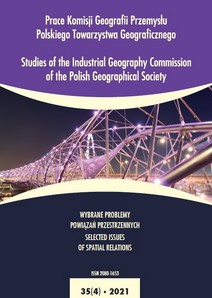Religious and museum tourism to Museum of the Holy Father John Paul II Family Home in Wadowice (Poland)
Religious and museum tourism to Museum of the Holy Father John Paul II Family Home in Wadowice (Poland)
Author(s): Franciszek Mróz, Alfréd KROGMANN, Magdaléna Nemčíková, Daša OremusováSubject(s): Christian Theology and Religion, Museology & Heritage Studies, Tourism, Sociology of Religion
Published by: Wydawnictwo Uniwersytetu Komisji Edukacji Narodowej w Krakowie
Keywords: Museum of the Holy Father John Paul II Family Home; museum tourism; pilgrimage; religious tourism;
Summary/Abstract: The research was aimed at identifying changes in tourist traffic – religious tourism and museum tourism to the Museum of the Holy Father John Paul II Family Home in Wadowice in 1996–2019. The museum was opened in 1984 in the house where Karol Wojtyła, Pope John Paul II, was born in 1920. The thorough reconstruction between 2010 and 2014 resulted in the establishment of a museum with a modern multimedia narrative exhibition. In recent years, the museum has been visited by more than 200 thousand tourists a year, including 40 thousand foreigners from more than 100 countries worldwide. During the years 1996–2019 the number of international tourists rose more than twice. The greatest boom in the visits to the museum was noted in 2005 and was associated with the disease, death, funeral, and increasing worship of Pope John Paul II. Following decreased interest in visits to the museum during the period of 2010–2014, which was due to the museum renovation, a revival and increase in visits to the museum was observed again. Changes that were observed in the museum during the last twenty-five years were identified, among other things, thanks to field research involving observations and interviews with museum curators and staff. Analyses of tourist visits to the museum were based on detailed data provided by the museum managers. In the elaboration of the collected research results descriptive-analytical, dynamic-comparative and cartographic methods were used.
Journal: Prace Komisji Geografii Przemysłu Polskiego Towarzystwa Geograficznego
- Issue Year: 35/2021
- Issue No: 4
- Page Range: 145-162
- Page Count: 18
- Language: English

